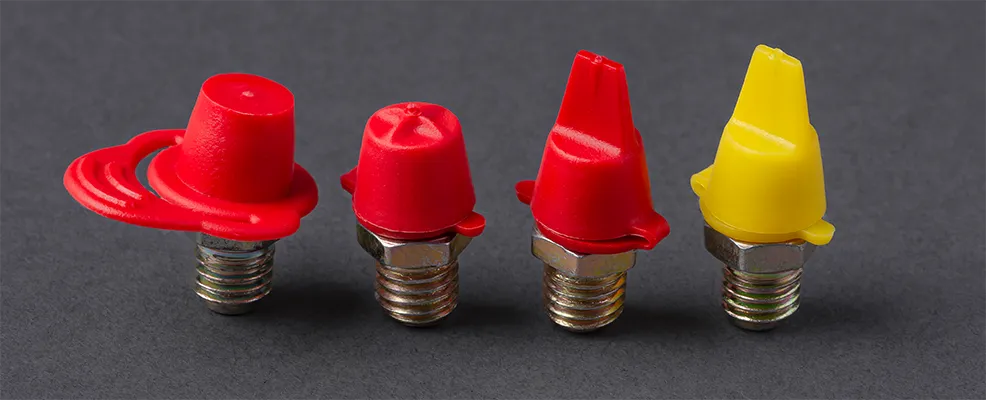Importance of Grease Fitting Covers: Essential Protection
Machinery requires regular maintenance and protection to run efficiently and effectively. Among the various components that need safeguarding, grease fittings play a crucial role in lubrication systems. They ensure the smooth operation of machinery but are susceptible to contamination, which can lead to costly repairs and downtime. Grease fitting covers are simple yet vital accessories that help protect these components from external contaminants. Below, we delve into their significance and best practices for maintenance.
Also Read: Home Sweet Investment: Retirees Turn Homes Into Gateways for Adventure
Understanding Grease Fitting Covers and Their Role in Machinery Maintenance

Grease fitting covers, like Zerk grease fitting covers, are designed to shield grease fittings from dust, dirt, and moisture. Given that these fittings are typically exposed to harsh industrial environments, the need for such covers cannot be overstated. These small caps serve as first-line defenders against contaminants that can clog the fittings, obstructing the flow of lubricant and compromising machinery efficiency.
Without an effective cover in place, grease fittings are vulnerable to corrosion and wear, leading to premature failure. The integrity of a machine’s moving parts relies heavily on the lubrication that these fittings supply, and any interruption in this lubrication process can have detrimental effects. By choosing the right grease fitting cover, maintenance personnel can mitigate these risks considerably.
The simplicity of grease fitting covers belies their importance; they are easy to overlook in the vast expanse of machinery components. However, their installation is a small yet critical step in maintaining the reliability of equipment. As part of a regular maintenance routine, checking and replacing these covers are tasks that yield high returns in terms of equipment longevity and performance.
Enhancing Equipment Longevity With Proper Grease Fitting Protection

The longevity of industrial equipment hinges on the meticulousness of the maintenance it receives. Grease fitting covers are a key adjunct to a comprehensive maintenance program, directly influencing the lifespan of the equipment they protect. By keeping the lubricant clean and free from contaminants, these covers help to diminish friction and wear on moving parts.
The cost of replacing a compromised grease fitting or repairing resulting damage to machinery far outweighs the minor expense of fitting covers. This puts into perspective their value as long-term investments. To maximize their benefits, it’s crucial for these covers to be of high-quality materials that can withstand the specific challenges of the operating environment.
Regular inspection of these covers for damage or wear is also vital. Equipment operators and maintenance personnel need to be trained to spot signs of failure or degradation in these components so that proactive measures can be taken. By ensuring that covers are intact and functioning as intended, businesses can prevent unplanned downtime that disrupts production schedules and inflates operational costs.
Best Practices for Installing and Maintaining Grease Fitting Covers
When it comes to installing grease fitting covers, the process is straightforward yet requires attention to detail. Firstly, ensure that the covers are compatible with the size and type of the grease fittings in use. Prior to fitting the covers, it’s crucial to clean the zerk fittings, removing any residual dirt or grease that might compromise the seal.
Applying the covers should be done gently to avoid damaging the fitting or the cover itself. An improperly installed cover can pop off or fail to provide a seal, leaving the fitting exposed. In environments where equipment vibrations are prevalent, securing the covers firmly is crucial to preventing them from being dislodged.
Maintaining grease fitting covers involves regular inspections to check for cracks, tears, or other signs of degradation. Exposure to chemicals, extreme temperatures, and UV light can deteriorate the material of the covers, necessitating their periodic replacement to maintain a high level of protection.
Innovations in Grease Fitting Cover Design and Materials

As industrial demands evolve, so too do the innovations in the design and materials of grease fitting covers. Manufacturers are continually researching and developing new materials to enhance the durability and functionality of these protective accessories. Advanced polymers and elastomers are now being used to create covers that can resist extreme temperatures and chemical exposure more effectively than their predecessors.
Smart design also plays a role in the efficacy of grease fitting covers. Some are crafted with ergonomic features that make them easier to remove and replace, reducing the time and effort required for maintenance tasks. Others are designed to provide visual indicators that signal when they need to be replaced, simplifying maintenance checks.
Overall, the understated grease fitting cover is a paramount contributor to the optimal operation of machinery. By investing in quality covers and maintaining them diligently, businesses can ensure their equipment remains productive, efficient, and free from preventable interruptions or costly repairs.







